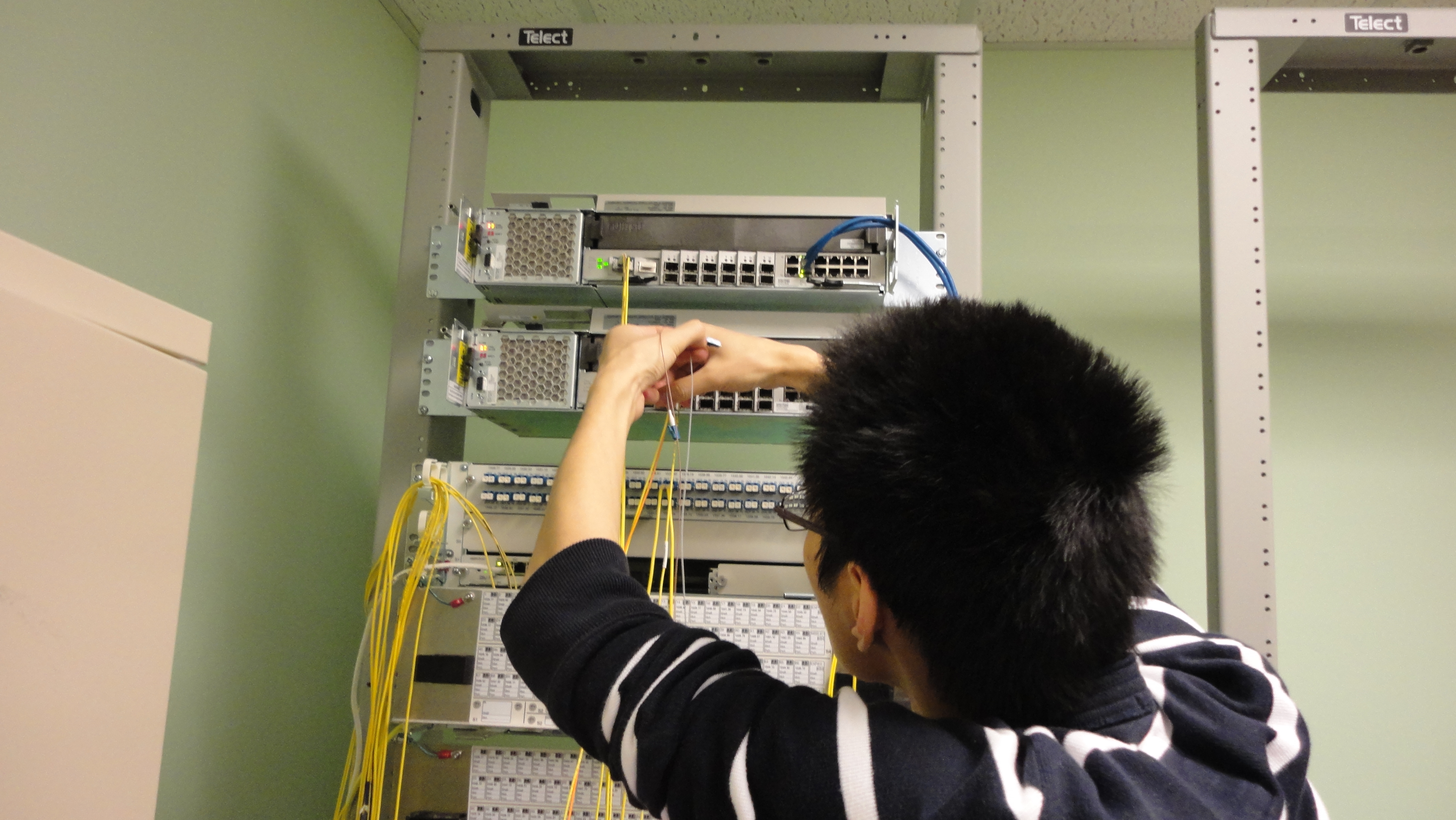The experiments were part of the National Science Foundation (NSF) funded effort in prototyping the DWDM multi-mode switching router, an important step towards next generation optical networks. Internal network traffic from Fujitsu Flashwave 9500 packet optical networking platform has been successfully routed through low-power optical switches with sub-millisecond configuration time.
SRL researchers are developing devices that that could automatically control the optical switches, thus realizing real-time configuration of Flashwave 9500. Two configurations were tested with the sub-millisecond optical switch. The first configuration routed the traffic from the output port of the switching fabric (SF) to the input port of the optical multiplexing device. The second configuration routed the traffic from the output port of the multiplexing device to the input of the wavelength selectable switch (WSS). Results showed that the configurations were compatible with network traffic running through Flashwave 9500. Latency is one of the core metrics when evaluating the performance. Latency measurements will be conducted using 3Com switches as well as Xilinx FPGA board as auxiliary devices.


* This material is based upon work supported by the National Science Foundation under Grant Numbers CNS-0708613, 0923481, 0926006, and the Texas Advanced Research Program (ARP) under Grant G096059. Any opinions, findings, and conclusions or recommendations expressed in this material are those of the author(s) and do not necessarily reflect the views of the National Science Foundation.